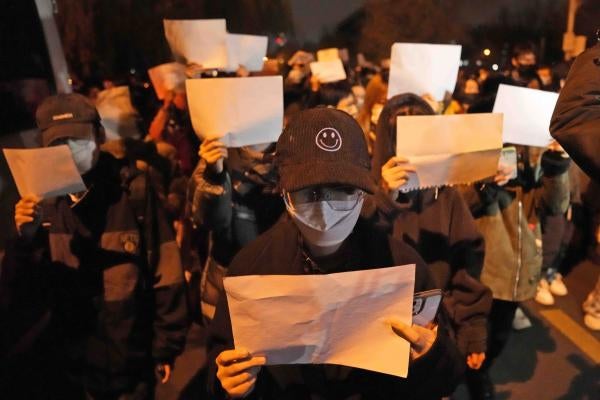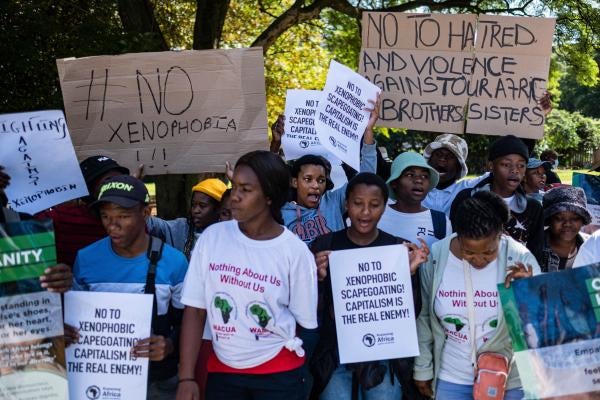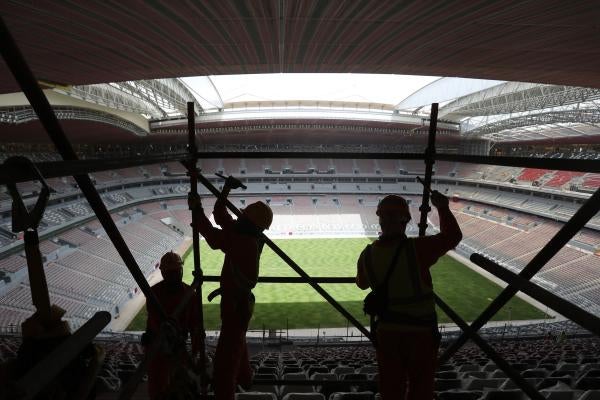Lire la version en français / Lea la versión en español
One year ago, a Chinese man, Peng Lifa, staged a lone protest on a Beijing bridge. His simple act helped inspire thousands of people across the country to take the streets to protest the government’s strict Covid-19 measures and to denounce the Chinese Communist Party’s authoritarian rule.
As the world watched, crowds of Chinese people gathered, holding up blank pieces of paper symbolizing censorship. What became known as the White Paper Protests grew into the biggest demonstration movement in China in a generation.
The Chinese authorities’ response was to crack down on any dissenting voice. Online information related to the protests was censored. Social accounts supporting the protests were suspended.
Young people, who made up the majority of the protesters, paid a heavy price for speaking out for freedom and human rights. Many were arrested, detained, and disappeared.
Some of the protesters detained were released days later. Others were released after several months.
However, not everyone was freed.
After his protest, Peng Lifa was disappeared. Kamile Wayit, a 19-year-old Uyghur student, detained for sharing a video of a protest online, is still behind bars a year later.
Chinese authorities’ have a habit of threatening detainees’ families to keep silent, which means it’s likely even more protesters have been detained or forcibly disappeared.
A year on, the protests have subsided. Yet, despite the repression, many young people in China and abroad continue to criticize the Chinese government under President Xi Jinping’s rule.
In Shanghai, some dressed in CCTV cameras for Halloween, subtly mocking the Chinese government’s repression and signaling, with a touch of humor, their ongoing hunger for freedom.







